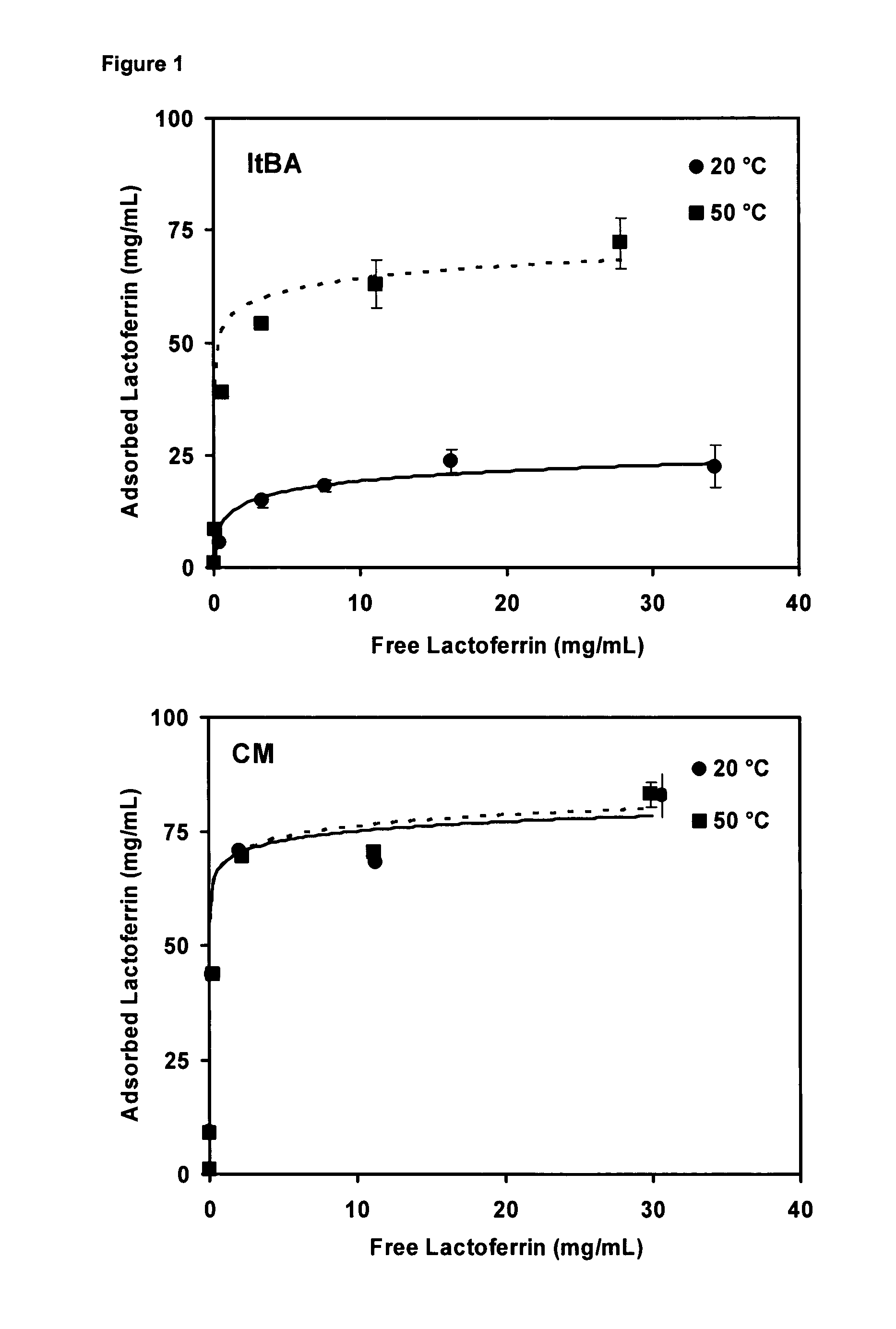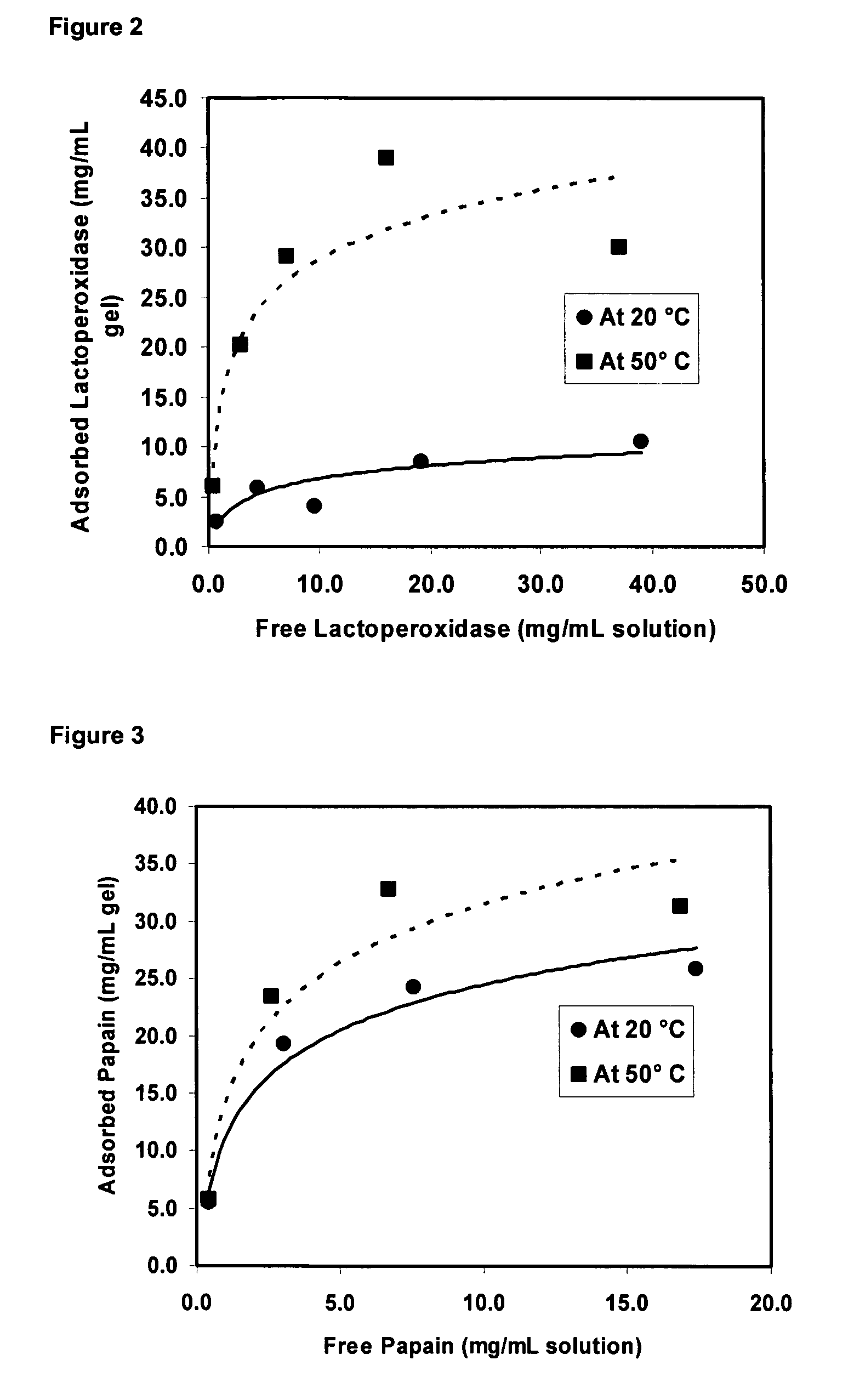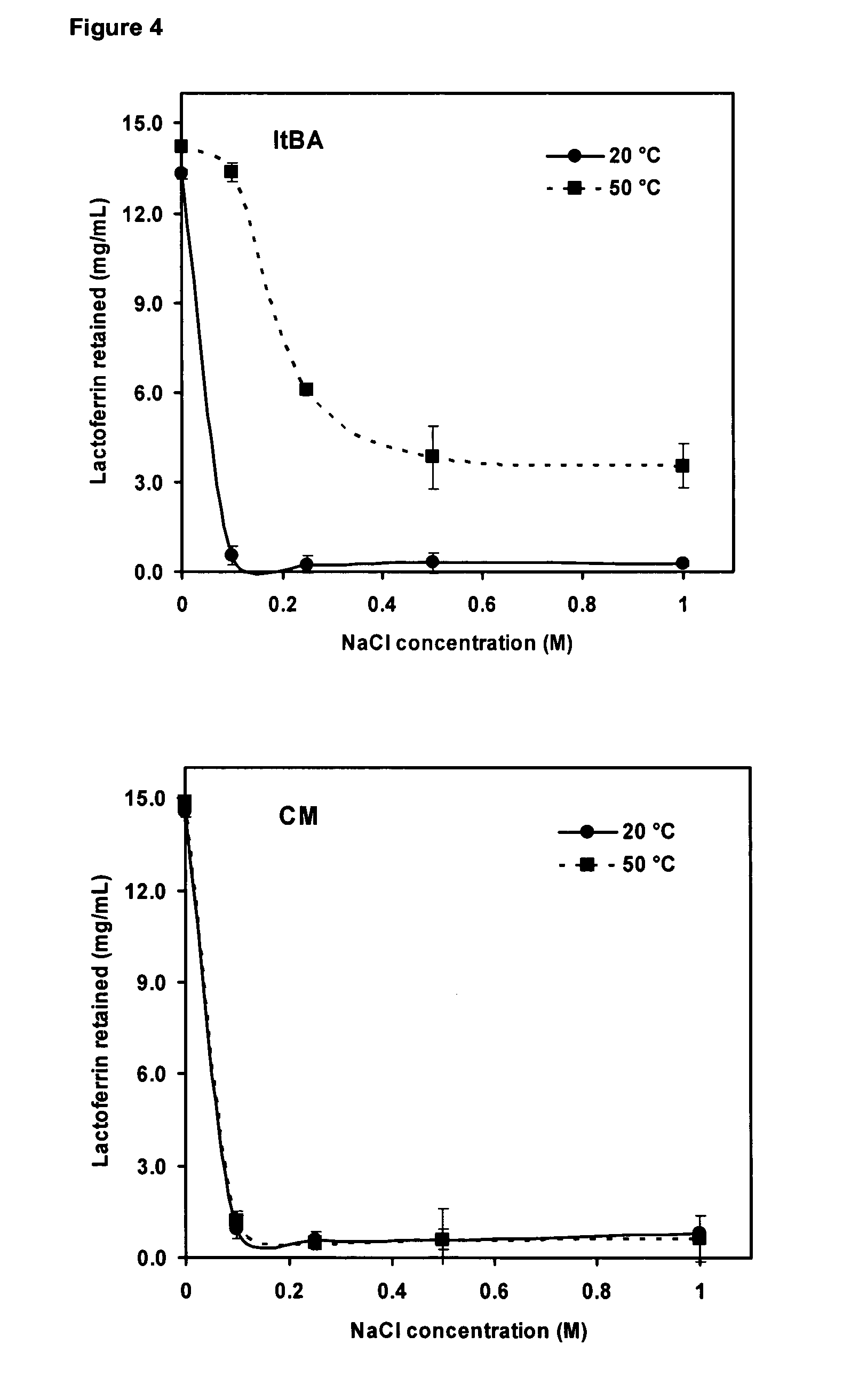Temperature-responsive polymer particles in protein separation applications
a technology of protein separation and temperature-responsive polymer particles, which is applied in the direction of peptides, enzymology, amphoteric ion-exchangers, etc., can solve the problems of lack of operational robustness, lack of flexibility required for process applications in the food and other industries, and silica-based sorbents
- Summary
- Abstract
- Description
- Claims
- Application Information
AI Technical Summary
Benefits of technology
Problems solved by technology
Method used
Image
Examples
examples
Materials
[0136]Crosslinked agaraose particles (Sepharose® 6 fast flow) were obtained from Pharmacia Biotech (Sweden), lactoferrin sample was provided by Food Science Australia (Werribee). N-isopropylacrylamide (97%), tert-butylacrylamide (97%), acrylic acid (≧98%), 1-(ethoxycarbonyl)-2-ethoxy-1,2-dihydro-quinoline (≧99%), 4,4′-azo bis(4-cyanovaleric acid) (≧98%), N,N-dimethylformamide (≧99.8%) and N,N′-methylenebisacrylamide (≧98%) were obtained from Sigma Aldrich (USA).
Preparation of Crosslinked Agarose Particles of the Invention
[0137]A polymerisation initiator, 4,4′-azobis(4-cyanovaleric acid) (ACV), was covalently immobilized onto the amino functionalised Sepharose 6 FF using N,N-dimethylformamide (DMF) as the solvent and 1-(ethoxycarbonyl)-2-ethoxy-1,2-dihydroquinoline (EEDQ) as the condensing agent (adapted from Yakushiji et al., Anal. Chem., 1999, 71, 1125-1130). A cross-linked polymer matrix was developed on the ACV immobilized Sepharose by radical polymerization using N-isop...
PUM
| Property | Measurement | Unit |
|---|---|---|
| temperature | aaaaa | aaaaa |
| temperature | aaaaa | aaaaa |
| temperature | aaaaa | aaaaa |
Abstract
Description
Claims
Application Information
 Login to View More
Login to View More - R&D
- Intellectual Property
- Life Sciences
- Materials
- Tech Scout
- Unparalleled Data Quality
- Higher Quality Content
- 60% Fewer Hallucinations
Browse by: Latest US Patents, China's latest patents, Technical Efficacy Thesaurus, Application Domain, Technology Topic, Popular Technical Reports.
© 2025 PatSnap. All rights reserved.Legal|Privacy policy|Modern Slavery Act Transparency Statement|Sitemap|About US| Contact US: help@patsnap.com



